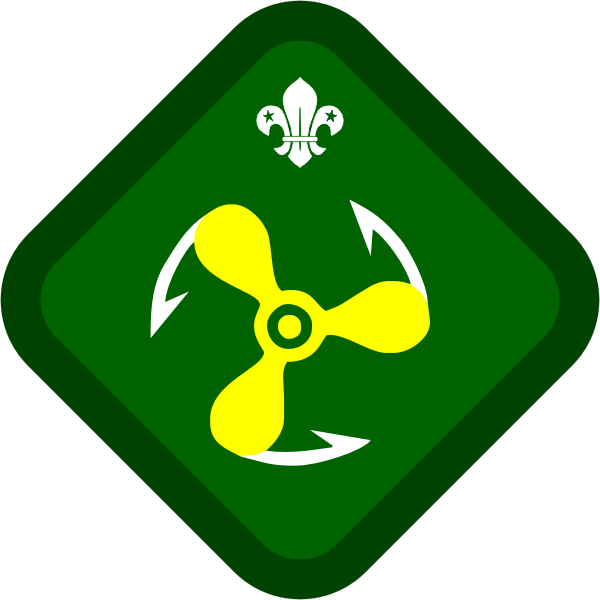


Power Coxswain
- Pass or have passed requirements 1, 2, 3, and 4 of the Junior Seaman (Boatman) Badge.
- Have a detailed knowledge of the steering and sailing rules for power and sailing vessels and show by demonstration, using diagrams or models, that you have a practical knowledge of local waters, including:
- Currents.
- Local hazards, sandbars, shallows, rocks, underwater obstructions, and any other dangerous features.
- Lights, daymarks and buoyage in relation to local water traffic, including fishing craft and fishing grounds.
- Alteration of course and turning signals.
- Know the safety precautions necessary in power craft, including the proper use of fire fighting appliances and 'man-over-board' drill.
- Have a knowledge of the elementary principles of the motor boat engine and by demonstration afloat show:
- That you can start the engine, operate the gears and understand the effect of transverse trust with a single screw.
- That you can turn circles using reverse gear, control the boat in confined waters and stop the engine when going slow ahead.
- That you can operate the correct towing procedure, including disposition of crew, and that you are familiar with the use of the kedge anchor in an emergency.
- That you can recognise the minor faults in an engine in relation to compression, ignition, battery and charging system, fuel supply and filters, intake and exhaust outlet.
- Take charge of a small crew and prepare the boat for service, to include the provision of all equipment. Supervise checking the engine, fuel and pump, and then:
- With minimum assistance, cast off ahead using the spring method. Steer a compass course (as set by the examiner), and anchor correctly. With the assistance of a second craft with anchor, demonstrate the use of the kedge anchor. Recover the ground tackle, get under way and return alongside without using reverse gear. Moor with spring and headrope.
- In response to a 'distress' signal, take charge of the crew, cast off with the current astern, using the spring and headrope method and proceed to a 'stranded craft' (aground in confined waters). Approach across the current and take aboard a 'survivor'; manoeuvre clear, using reverse gear, and proceed to pick up a 'body' (not an actual person) from the water. Bring your boat alongside with the current, using reverse gear, giving appropriate orders to crew, and make fast. Supervise preparations necessary to disembark the 'casualty'.
Notes
Reference should be made to the Activity Rules in chapter nine of Policy, Organisation and Rules and the Adventurous Activity Permit Scheme .
The above conditions are designed for the use of inboard power craft and this type of craft should be used if practicable.
For the use of outboard motor craft the tests should be modified accordingly, e.g.: 4(a) include some "additional practical knowledge in care and maintenance of outboard engine" and "mixture of fuel and lubricant"; 4(b) delete reverse gear requirement; 4(d) modify accordingly; and 5(b) delete use of reverse gear entirely and substitute "veer down on wreck using anchor" and when returning alongside substitute "using a drogue".
